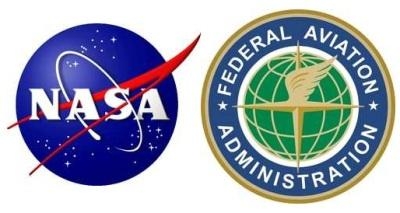Thu, Aug 15, 2013
Precision Departure Release Capability (PDRC) Helps Accurately Predict Departure Times, Runways
In the latest example of NASA and the FAA working together to enhance safety and efficiency in the nation’s airspace, NASA has handed off to the FAA a new, NextGen software tool that will improve the flow of aircraft from runways to cruising altitudes.

The tool, called Precision Departure Release Capability (PDRC), was developed by NASA and transferred to the FAA so the agency can further develop and implement PDRC. This marks the third time in the past two years the two agencies have collaborated on the development of new technologies to enable aircraft to fly more efficiently, easing congestion in the nation’s skies and reducing aviation’s impact on the environment.
PDRC was developed after an extensive analysis of aircraft operations showed that uncertainty in precise departure times due to factors such as bad weather and heavy traffic may result in missed opportunities for those flights to efficiently merge into the flow of high altitude traffic. PDRC’s surface model component accurately predicts both departure times and departure runways. This information is automatically sent to en route centers, where PDRC’s en route model component provides ascent trajectories from takeoff to the merge point in the high-altitude traffic stream.
PDRC tests conducted since 2011 demonstrate that the tool helps to fill slots in the high-altitude flow that would otherwise go empty due to timing issues. PDRC would complement the technologies and procedures already being used by the FAA to manage traffic flow and ease delays through each phase of flight.
In earlier technology transfers, the FAA accepted a technology in February 2012 that also improves the management of air traffic in congested skies. This technology, called Three-Dimensional Path Arrival Management (3D PAM), helps air traffic controllers deliver aircraft from cruising altitude to the runway more efficiently, reducing noise and fuel burn.
In July 2011, NASA transferred to the FAA significant work on flow-based trajectory management, which helps air traffic controllers coordinate the flight paths of aircraft ascending through congested airspace in order to improve traffic flow and increase capacity.
More News
Known Traffic With respect to ATC clearances, means aircraft whose altitude, position, and intentions are known to ATC.>[...]
Aero Linx: Aviation Suppliers Association (ASA) Established February 25, 1993, the Aviation Suppliers Association (ASA), based in Washington, D.C., is a not-for-profit association,>[...]
Abeam An aircraft is “abeam” a fix, point, or object when that fix, point, or object is approximately 90 degrees to the right or left of the aircraft track. Abeam indic>[...]
Aero Linx: The Air Charter Safety Alliance The group, called the Air Charter Safety Alliance, will raise awareness of illegal charter flights among potential customers, charter bro>[...]
“For months, ALPA has been sounding the alarm on the ongoing efforts by some aircraft manufacturers to remove pilots from the flight deck and replace them with automation. To>[...]
 ANN's Daily Aero-Term (06.10.24): Known Traffic
ANN's Daily Aero-Term (06.10.24): Known Traffic ANN's Daily Aero-Linx (06.10.24)
ANN's Daily Aero-Linx (06.10.24) ANN's Daily Aero-Term (06.11.24): Abeam
ANN's Daily Aero-Term (06.11.24): Abeam ANN's Daily Aero-Linx (06.11.24)
ANN's Daily Aero-Linx (06.11.24) Aero-News: Quote of the Day (06.11.24)
Aero-News: Quote of the Day (06.11.24)



